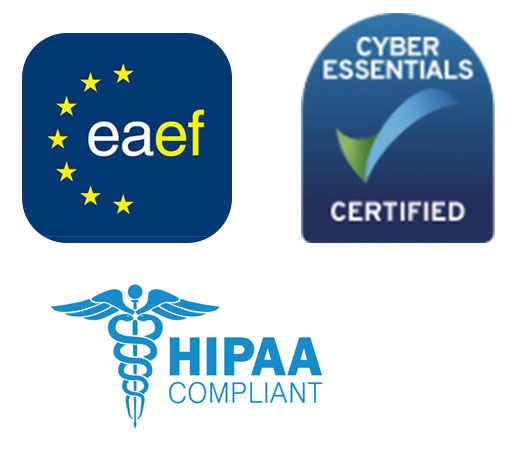
The Gap Between Top Down and Frontline Needs
Many workplace wellbeing initiatives start with good intentions but miss the mark on the frontline. Traditionally, companies launch top down programs such as wellness apps, one off webinars, or blanket policies and hope they will reduce stress and burnout.
The reality is that frontline teams in high pressure roles, such as Trust and Safety moderators or cyber incident responders, often find these offerings irrelevant or hard to use amid their daily pressures. Generic wellbeing solutions serve a purpose, but they are not designed for the operational reality of high pressure environments. They are external to the flow of work, easy to ignore, and often reactive, offered only after burnout hits rather than before it.
Why Generic Wellbeing Programs Fall Short
Top down, standardized wellness programs rarely gain traction in intense environments. A one size fits all approach might roll out meditation apps or EAP counseling across all sites but ignore vital context.
These programs are external to workflows and put the burden on individuals to seek help, making them easy to dismiss when deadlines are pressing. They also struggle to show measurable impact.
In high pressure teams, a generic yoga session or helpline number does not address the deeper stressors of trauma, exposure, or relentless pace. Wellbeing must be built into the work reality, not bolted on as an afterthought.
Different Teams, Different Needs
Wellbeing needs vary widely across sites, cultures, and roles.
A Trust and Safety moderation team in Dublin may face traumatic content, while a cybersecurity team in Bangalore manages the fatigue of 24 hour monitoring. Even within one company, team maturity and local socio demographics influence what support works best.
As one of our larger BPO wellbeing executives put it – “We do not define wellness as one thing or dictate how it needs to be managed for everyone because it is different for each employee.” When frontline teams help define what wellbeing means for them, programs gain credibility and traction.
Co Design: Wellbeing With Teams, Not For Teams
Closing the gap requires a shift to designing wellbeing programs with the frontline, not just for them.
Co design means involving employees in creating the solutions they will use through interviews, workshops, and pilot sessions. This approach consistently leads to higher participation and better outcomes. “We quickly learned that what works in one site or team might flop in another,” says Melanie Baxter, Global Wellbeing Director at Alorica.
“By co-designing our wellbeing initiatives with each frontline team, we saw engagement and satisfaction surge. People actually use the support now because it feels like it was built by them, for them.” Sharon Nannetti, Zevo Health’s Global Services Delivery Director, adds: “In high pressure roles like Trust and Safety, a one size fits all wellness program will always miss the mark. Our co creation approach changed that. We collaborate with teams on the ground to tailor support to their reality.”
Case in Point: Co-Creation in a large BPO customer
Alorica, one of the world’s largest BPOs, partnered with Zevo Health to reimagine wellbeing for their Trust and Safety teams.
Instead of rolling out a top down model, they held listening sessions with moderators, gathered input on stress points, and co designed localized programs for each site.
Some teams wanted on site clinicians for post shift debriefs. Others preferred peer led resilience circles or trauma education sessions. The key was flexibility.
The impact was significant.
-
Satisfaction jumped from 62% to 89% in one quarter
-
Attrition dropped to just 2%, a level rarely seen in the BPO sector
-
Engagement grew organically as employees began recommending sessions to peers
When people feel they are at the center of wellbeing design, trust and retention follow. “When people feel like they are at the center of what you are doing, they do not want to leave,” said Mel. “That is not just good for people, it is good for business.”
From Onboarding to Offboarding: The SAFER™ Framework
These lessons are now part of Zevo’s SAFER™ framework, a systemic model that helps people perform at their best under pressure.
Instead of one off wellness activities, SAFER™ embeds wellbeing into every layer of the organization from C suite to middle managers to frontline teams and across the entire employee lifecycle.
This means
-
Role specific resilience training at onboarding
-
Regular mental health check ins
-
Embedded recovery breaks and micro sessions
-
Trauma informed crisis response
-
Thoughtful offboarding support
SAFER™ is measurable and aligned to key performance indicators such as handling time, accuracy, and absenteeism. It ensures wellbeing is not an HR add on but part of how work gets done.
Rethinking Wellbeing Design
You cannot parachute in a wellness program and expect change.
Whether your teams handle harmful content, financial fraud, or customer escalations, the principles remain the same.
-
Engage your people early
-
Design with them, not for them
-
Measure impact as rigorously as any operational KPI
When frontline employees help shape their wellbeing solutions, they are far more likely to use them and the business benefits through better retention, lower burnout, and stronger performance.
It is time to move from top down management to frontline co creation. That is what truly sustainable wellbeing looks like in high pressure environments.

